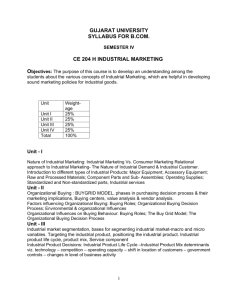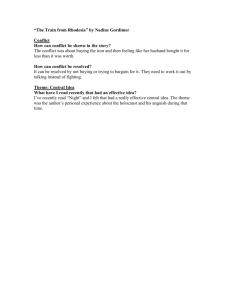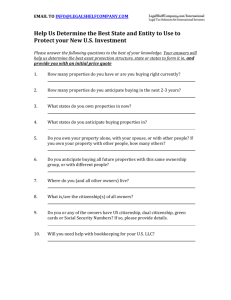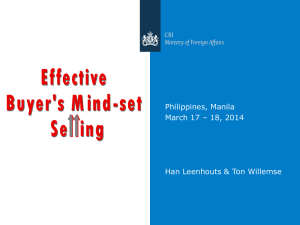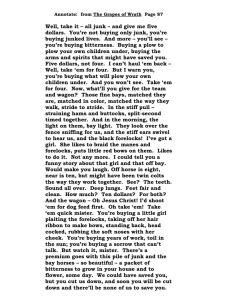G253 Consumer Psychology
advertisement
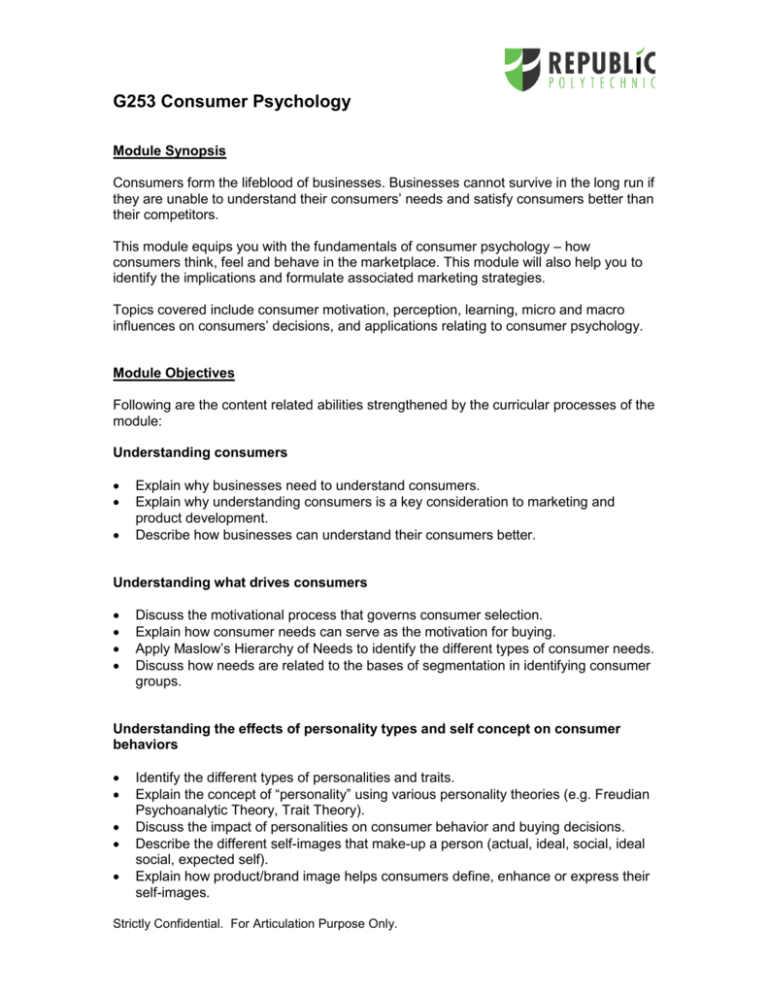
G253 Consumer Psychology Module Synopsis Consumers form the lifeblood of businesses. Businesses cannot survive in the long run if they are unable to understand their consumers’ needs and satisfy consumers better than their competitors. This module equips you with the fundamentals of consumer psychology – how consumers think, feel and behave in the marketplace. This module will also help you to identify the implications and formulate associated marketing strategies. Topics covered include consumer motivation, perception, learning, micro and macro influences on consumers’ decisions, and applications relating to consumer psychology. Module Objectives Following are the content related abilities strengthened by the curricular processes of the module: Understanding consumers Explain why businesses need to understand consumers. Explain why understanding consumers is a key consideration to marketing and product development. Describe how businesses can understand their consumers better. Understanding what drives consumers Discuss the motivational process that governs consumer selection. Explain how consumer needs can serve as the motivation for buying. Apply Maslow’s Hierarchy of Needs to identify the different types of consumer needs. Discuss how needs are related to the bases of segmentation in identifying consumer groups. Understanding the effects of personality types and self concept on consumer behaviors Identify the different types of personalities and traits. Explain the concept of “personality” using various personality theories (e.g. Freudian Psychoanalytic Theory, Trait Theory). Discuss the impact of personalities on consumer behavior and buying decisions. Describe the different self-images that make-up a person (actual, ideal, social, ideal social, expected self). Explain how product/brand image helps consumers define, enhance or express their self-images. Strictly Confidential. For Articulation Purpose Only. Explain how consumers’ self-images affect their buying behavior and brand choice. Discuss how marketers can leverage on consumers’ self images to influence consumer buying. Understanding the way consumers perceive, select, organize and interpret information Discuss how consumers perceive and select information. Describe the concept of perceptual thresholds and how consumers’ attention can be captured within the thresholds Describe the methods for increasing perceptual thresholds to capture consumer attention. Describe the methods of organizing information to maximize returns (such as the use of grouping methods, figure and ground, closure). Explain selective perception and its implication to Marketers. Discuss the different methods whereby consumers interpret information Discuss how consumers perceive and interpret information based on their biases and assumptions Describe the types of perceptual distortions and biases (such as stereotyping, halo, halo effect, first impression, jumping to conclusion, etc). Discuss ways that companies can overcome or harness perceptual distortions (e.g. perceived service quality, perceived risks, perceived pricing, perceived brand/ product image, etc.) Understanding how different learning styles affect consumer behaviors Describe the different methods where consumers acquire / learn behaviors (i.e. Classical and Operant Conditioning) Demonstrate the applications of behavioral learning Describe how consumers learn through cognitive learning (iconic rote, observational learning, reasoning) Explain how cognitive learning influences purchasing decisions Demonstrate the applications of cognitive learning Understanding how consumer attitude can be formed and changed Explain the components of attitude (cognitive, affect, behavior) Discuss the ways to change attitude (changing components of attitude, assigning causality by Attribution Theory) Apply the strategies to change consumer attitude Understanding the effect of external factors on consumer behavior Describe the different micro social influences on consumer behavior (reference groups, opinion leaders, family, etc). Explain consumers’ need for conformity to such groups. Strictly Confidential. For Articulation Purpose Only. Discuss how the different micro social influences affect consumer decision-making e.g. consumer buying. Describe the different macro social influences on consumer behavior (cultural, subcultural, cross-cultural, social class). Explain how decisions and strategies have to be modified according to different cultural settings and consumer types. Understanding consumer buying decision making process under different buying situations Describe the stages in the B2B & B2C buying decision making process Distinguish the difference between new task buying, straight rebuy and modified rebuy under the B2B environment. Discuss other buying situations under the B2C environment (impulsive buys, repeated purchases) Explain how modifications can be made to suit different buying decision situations Understanding how to gain insights about consumers and integrating understanding of consumers in recommendations Recognize the ways to identify consumer research objectives Identify the different research methods Design a consumer research that meet client’s research objectives Identify ways to ensure reliability and validity of quantitative data (e.g. sampling and fieldwork methodologies) Discuss ways to ensure robustness of qualitative data (e.g. different projective techniques) Identify ways to analyze quantitative data collected using data processing software (e.g. SPSS) Discuss ways to analyze qualitative data (e.g. narrative analysis, discourse analysis, and textual analysis) Discuss ways to present research findings Understand the implications behind consumer research findings Report research findings and provide recommendations based on understanding of consumers Strictly Confidential. For Articulation Purpose Only. Module Syllabus School/Centre Academic Year Module Name : : : Centre of Innovation and Enterprise AY 2007/2008 Semester 2 G253 Consumer Psychology Learning Objectives: 1. Discuss why an understanding of consumers’ needs is an important step to any product and brand development/marketing activities. 2. Discuss the effect of personal factors such as personality, motivation, perception and learning in affecting consumer behavior. 3. Discuss the effect of external factors such as reference group, family and culture in affecting consumer behavior. 4. Describe the consumer buying decision making process. 5. Describe the different buying situations. 6. Formulate recommendations based on understanding of consumers’ behavior. Module Coverage Understanding consumers Understanding what drives consumers Understanding the effects of personality types and self concept on consumer behaviors Understanding the way consumers perceive, select, organize and interpret information Understanding how different learning styles affect consumer behaviors Understanding how consumer attitude can be formed and changed Understanding the effect of external factors on consumer behavior Understanding consumer buying decision making process under different buying situations Understanding how to gain insights about consumers and integrating understanding of consumers in recommendations Total = 16 Problems = 96 hours Allocated time per day (One day-One problem PBL pedagogy) Discussions Resource Formal Lab in Study gathering and Experiment Cluster team work 4 2 4 2 8 4 8 4 8 4 4 2 8 4 4 2 16 8 64 32 Strictly Confidential. For Articulation Purpose Only.

